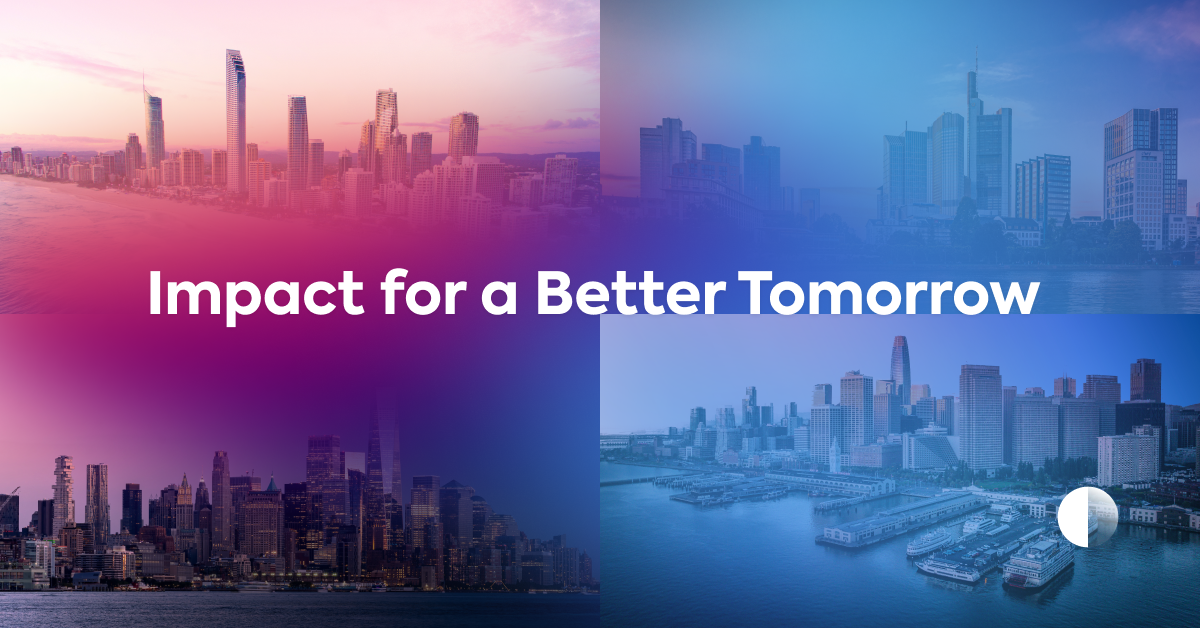In a world of constant, rapid transformation, customers expect organizations to match the pace of change through innovation.
This is a problem for those organizations who continue to rely on expensive, inflexible and often technically obsolescent enterprise solutions which eat up time and resources and slow down innovation.
To continuously transform at the pace demanded by a digitized world, organizations of all sizes and sectors need a better toolkit of technology and processes than that offered by snail’s-paced enterprise solutions.
It’s just such a toolkit that Ryan Agar, Enterprise Architect at the Government of Yukon (YG), is currently building for his organization – who sorely need it.
Though Yukon covers an area of North West Canada slightly larger than France, it has a population of just 42,000 – and YG’s budget and talent pool are similarly small.
Nevertheless, Yukon’s citizens expect their government to provide them with digital services as slick as those they receive from private companies and larger government organizations on a daily basis.
At last year’s EA Connect Day Americas, Agar talked us through some of the principles that make up the toolkit YG are using to deliver great services on a (comparative) shoestring.
He also shared the story of how, during COVID-19’s outbreak, YG used these principles (and LeanIX) to build the first iteration of a government-saving dashboard in three days flat.
Here’s a quick run down of some of the key toolbox elements Agar talked us through. For the stuff we couldn’t fit in here (and there’s a lot of great stuff, especially around digital identity management), you should make a beeline for Agar’s talk below.
Seeking interoperability and cultivating openness
To deliver new services as fast as Yukon’s citizens expect them, YG’s IT operations have to be streamlined. That means identifying and employing interoperable technology and approaches that can be reused and adapted across multiple projects.
Agar’s team prefers lightweight, web-favoring tech to enterprise solutions (which tend not to play well with others). They use APIs as levers to interact with systems (including systems they’re ‘kicking the tires’ on in procurement) and containerization to enable rapid deployment.
YG also re-use tech, policies and processes from other governmental jurisdictions to save time and money. This sharing of ideas is facilitated by a fundamental principle now followed by many governments (and promoted via interoperability): openness.
For example, YG leveraged the Government of British Columbia (BCG)’s launch of a digital marketplace for procurement to build a marketplace of their own with minimal cost and sweat – and was able to do so because BCG had made the development code for their portal public.
YG themselves now do much of their development work in the open, pushing dev code onto a public code platform and publishing data and APIs via open portals.
This allows a wider community of developers to experiment with YG’s coding, collaborate with YG and each other and help push their services forward as fast as possible.
The organization is also opening (and speeding) things up internally by using LeanIX to democratize their enterprise architecture. Thanks to the platform’s easy-to-use interface, YG’s various departments are now contributing their own enterprise data on a regular basis.
Agar is now more curator than creator – and has a more comprehensive and accurate picture of the organization’s architecture and application portfolio to make transformative decisions with.
Removing (risky) red tape
Government and red tape can seem like a package deal – and even a civil service as small as YG’s has piles of the stuff to hack their way through.
While a diligent review process is essential for governmental organizations, red tape is often needless. Not only does it get in the way of innovation – it also creates IT risks by slowing progress.
In order to enable YG’s project teams to do the right (i.e. properly reviewed) thing while keeping things moving forward, Agar’s team is establishing a “golden path” architecture that ‘puts up guard rails instead of gates’, reducing duplication, streamlining processes and using pre-reviewed components wherever possible.
This, combined with a new, open and agile approach to project delivery that promotes smaller IT investments over large ones to enable a fail fast mentality, is enabling swift and safe delivery of new services to Yukon’s citizens.
LeanIX Connect 2022: Creating a culture of innovation that’s ready for anything
To match pace with a world of constant, unexpected change, today’s enterprises have to be always innovating, always adapting, “always-on”. Enterprise architects like Ryan Agar are stepping up to enable this “always-on” state – sometimes to the extent of keeping the lights on.
In 2020, YG’s resources were severely impacted by the outbreak of COVID-19 – and hard decisions needed to be made about which of their IT systems were truly business critical.
Agar and his team solved this crisis by using LeanIX to build a dashboard of the organization’s critical and essential services. (The first iteration was built in just three days.) This enabled YG to keep functioning and supporting its citizens through the worst stages of the pandemic.
The fact that it was an enterprise architect who helped assure business continuity is striking – but shouldn’t surprise us. EAs are uniquely positioned within the enterprise to understand where technology is holding the business back. With the help of team collaboration they can also spot where it can be applied to move it forward - fast.
At LeanIX Connect 2022, we’ll be hearing from thought leaders and LeanIX customers like Ryan Agar about the essential role enterprise architecture has to play in enabling innovation for the always-on enterprise.
It’s an exciting time to be an enterprise architect, and we’re super excited about this event.
To find out more about why you should be too – and to book yourself a spot – head to the event page as fast as your browser can take you.
